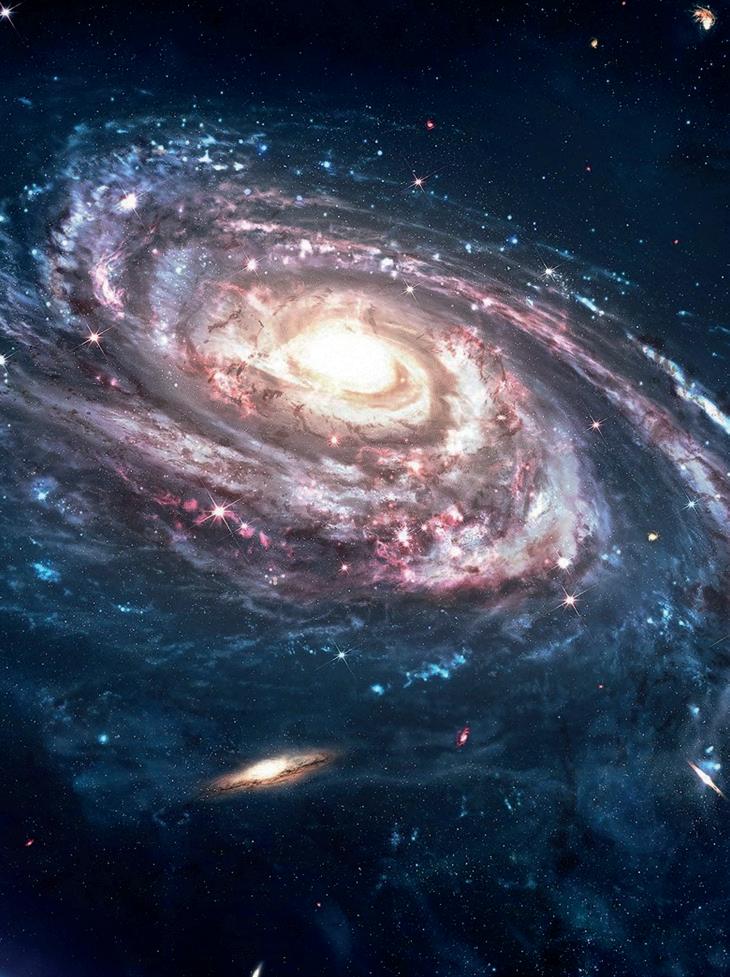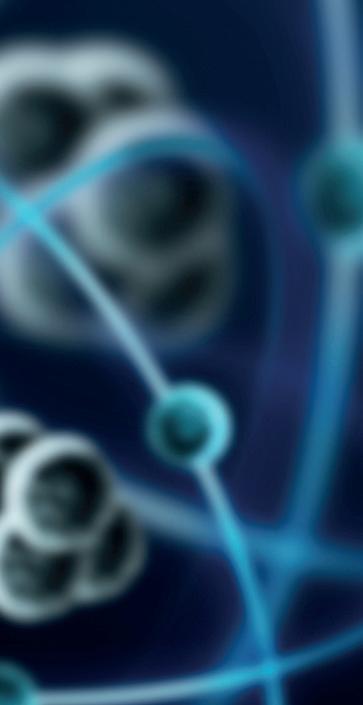
8 minute read
Cover note THREE EVIDENCES OF
from 790_English
THREE EVIDENCES OF INTELLIGENT DESIGN COVER NOTE
The argument of intelligent design shows that there is no incompatibility between the God revealed in the Bible and the designer of all Creation.
Advertisement
Antonio Cruz (*)


The natural order, the purpose, the simplicity, the sense and the beauty seen in the world are proof of an intelligent design. But if that is not enough to the most skeptical, let us talk about these three evidences: the fine-tuning of physical laws and constants, the biological information contained in DNA, and the irreducible complexity of certain organs and functions. None of the

three could be originated only by chance.
The universe is governed by physical laws so meticulously precise that the tiniest modification would make life on Earth and, of course, our human existence, impossible.For example: the strong nuclear force, which binds together protons and neutrons in the nucleus of atoms; the weak nuclear force, which is the mechanism
COVER NOTE
of interaction between subatomic particles that is responsible for the radioactive decay of atoms and is 1013 times weaker than the strong one; the electromagnetic force, which acts between electrically charged particles; the gravitational force, which is an attractive force between pieces of matter and is the weakest of the four over short distances; the precise relations existing between the electromagnetic and gravitational force, or between the mass of the proton and that of the electron, or between the amount of protons and that of electrons; the speed of expansion of the universe; the value of entropy (degree of disorder) of the universe; the mass density of the universe; the speed of light; the age of the cosmos; the uniformity of radiation, the average distance between stars, etc.
There are many more parameters that must fit perfectly within very narrow margins of fine-tuning for life on Earth to be possible. [1] Should only one of these be minimally altered, the universe would collapse.
This amazing balance of forces leads us to think that someone designed it with a purpose. The same can be said of the constitution of planet Earth and its location in space.
There are dozens of interrelated parameters that enable the planet’s habitability and the existence of intelligent life. For instance: the precise inclination of the Earth’s axis, the distance from the Earth to the sun or the moon, the thickness of the Earth’s crust, the gravitational force on the planet’s surface, the duration of day and night, etc. If any of these parameters were altered, all traces of life on the blue planet would be extinguished. [2]
This leads us to think once again that the Earth, as well as the Solar System, the Milky Way and the Universe, were designed wisely to house intelligent life. From a skeptical position, it could be argued that this is a too anthropocentric or geocentric view, since the universe is huge and not all possible worlds are yet known, and we do not know if there is life or not on other distant planets. Of course, it is a possibility.
However, the data available to science allow us to say that there is today no evidence whatsoever of life in any other part of the cosmos. But, even if life were found somewhere else, this would not have to affect the identity of the human being, the biblical revelation, or the veracity of the Christian faith.
What is certain is, first, that God, controls all creation even in the smallest details and nothing escapes His domain and providence. Second, the information stored in living beings constitutes another argument in favor of intelligent design.
What is information? It can be said that it is the communication between intelligent beings through a common language. Of course, this language must exist and

Naturalism believes, however, that DNA information is the result of chance and blind natural laws. However, the best explanation to me is that someone extremely intelligent entered the information into the DNA. No algorithm and no law of nature is capable of producing information, as it always requires an intelligent informant.

be understood before any attempt at communication. For example, a musical score contains information that is expressed through the language of notes and signs on staves. The melody may be in the composer’s mind, but he will not be able to communicate it to anyone, unless he expresses it in the appropriate musical notation.
Every language is, therefore, a set of conventional signs used for transmitting information, be it musical, grammatical, mathematical, computer, etc. Now, the signs (musical notes, letters, numbers, etc.) do not exist in reality since they are intangible abstractions. They are not physical entities and do not occupy any space in the universe. They may be in the mind, but not in the real world.
That said, let us see what happens with the DNA (deoxyribonucleic acid) existing in the cells of living things. This unique biological macromolecule contains information that, instead of notes on the stave, is manifested in the arrangement of chemical bonds between four nitrogenous bases: adenine (A), thymine (T), cytosine (C) and guanine (G). It not only stores and retrieves information, but also corrects it – if errors occur – re-

plicates it and saves copies, transcribes it to the RNA for its subsequent translation into proteins, etc.
Thus, the DNA information of one single human cell, such as a fertilized egg, is capable of producing the tremendous complexity of a baby in just nine months. A human creature is formed, not a chimpanzee or any other being. How could all this amount of information in cellular DNA arise for the first time, taking into account that such information cannot be generated by any physical object arising naturally? Who preset the language of DNA?
The genetic code, which is like the DNA translation dictionary to proteins, had to exist before the DNA itself and originate outside it. The information could not be generated by the DNA molecule, which is a chemical entity without purpose or intelligence.
Naturalism believes, however, that DNA information is the result of chance and blind natural laws. However,

the best explanation to me is that someone extremely intelligent entered the information into the DNA. No algorithm and no law of nature is capable of producing information, as it always requires an intelligent informant.
Finally, we have biological complexity as evidence of intelligent design. Biologist Michael J. Behe defines the irreducible complexity of organs, structures and metabolisms of living beings through the following quote: “A irreducibly complex is one that requires closely matched parts to function, and we can conclude that it was produced as an integrated unit.” [3]
Such a system could never have been produced by gradual evolution, as Darwinism proposes, because any earlier simpler system lacking some part could not have worked well. This means that all irreducibly complex systems, such as the bacterial scourge, the cilia of the protozoa, the human eye, the coagulation of blood, the antibodies, or the cells of organisms themselves, had to be designed like this from the beginning, since they could not have arisen through a gradual, blind and purposeless evolution.
An irreducibly complex organ can be compared to a mousetrap. If only one of its integral parts is removed, the mousetrap is no longer useful for hunting rodents. Someone had to design it perfectly finished and functional.
Sometimes it is objected – against the previous statement that the human eye is an irreducibly complex organ and that, therefore, could not have formed by evolution – that in nature there are different kinds of eyes, from the simple ones of invertebrates such as clams, to the complex ones of humans or birds such as eagles, and that this would be proof that there has been gradual evolution in the animal world, from simple eyes to complex ones.
However, nature never shows the hypothetical series
COVER NOTE
of intermediate links that such an evolutionary chain requires but, rather, a whole variety of irreducibly complex organs that are well finished, perfectly functional and adapted to the biological needs of their current holders.
Even if it were accepted that an organ as sophisticated as the human eye had been produced through a slow and gradual evolution, another important question would still have to be explained. How would the eye have known how to connect with the brain and learn its language to translate visual information? If everything happened by random mutations, why did it not connect to the ear, spinal cord or nose?
The creation of a language must be prior and independent to the organs or objects that use that language. So, once again, the best explanation is the intervention of a previous intelligence, since the eye is unable to direct or coordinate its own development.
Moreover, even if science ever showed, through irrefutable evidence, that macroevolution is a fact and that all living beings on this planet descend from a common ancestor – from a primitive cell as Darwinism states – that would not discard at all the need for a creative God who would have used such a method to design the world.
Creation from nothing would continue to be God’s work because the physical universe is absolutely incapable of creating itself. In general, monotheistic religions ( Judaism, Christianity and Islam) assume the idea of God as an omniscient creator.
For its part, naturalism is unable to successfully explain the origin of the fine-tuning of the universe, as well as that of information and biological complexity, because the blind and random forces of nature lack the creative power required. Only an intelligent, transcendent and personal designer, like the God of Scripture, could have done everything from scratch.
NOTES [1] Ross, H., The Creator and the Cosmos (1993); Improbable Planet (2016). [2] González, G. and Richards, J. W., The Privileged Planet (2004). [3] Behe, M. J., Darwin's Black Box (1996).










